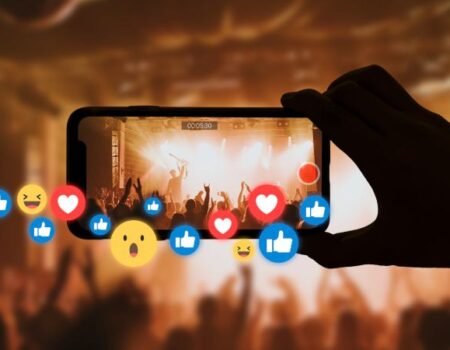What Is Ad Fatigue and Why Does It Matter?
If your ad performance is dropping, engagement is slowing, and conversions are down, you might be dealing with ad fatigue. This happens when audiences repeatedly see the same ad, and instead of engaging with it, they start ignoring it. Over time, this results in declining returns on your marketing efforts.
With today’s highly competitive digital advertising space, businesses invest significant budgets in paid campaigns. But when ads lose their impact, your money is essentially wasted. Instead of driving clicks, leads, and sales, you end up paying for impressions that don’t convert.
Ad fatigue doesn’t just affect one campaign—it can negatively impact your brand reputation. When people see the same ad too often, they may associate your brand with annoyance rather than interest. This can lead to ad blindness, where potential customers unconsciously ignore your marketing, reducing long-term effectiveness.
The good news? You can prevent ad fatigue by understanding why it happens, recognizing the warning signs early, and implementing smart strategies to keep your advertising fresh and engaging. Let’s dive into everything you need to know.
Signs of Ad Fatigue You Shouldn’t Ignore
Recognizing the signs of ad fatigue early can save your campaign from underperformance. Here are some common indicators that your audience has had enough of seeing the same ads:
- Decreasing engagement rates – If your ad once received high likes, shares, and comments but now gets little to no interaction, fatigue might be setting in.
- Declining click-through rates (CTR) – A dropping CTR means users are seeing your ad but choosing not to interact with it.
- A rising cost per acquisition (CPA) – If you’re paying more per conversion despite no major campaign changes, your ad’s effectiveness may be wearing off.
- Increased ad frequency – Ads appearing too often to the same users will likely lead to disinterest and frustration.
- Negative audience feedback – Users may hide your ad, report it, or leave negative comments about seeing it too frequently.
The more of these signs you notice, the sooner you need to refresh your advertising approach.
Why Does Ad Fatigue Happen?
Before you can fix ad fatigue, it’s crucial to understand the causes of ad fatigue and why audiences lose interest in digital ads. Here are the main reasons:
- Overexposure – If someone sees the same ad too often, they’re more likely to ignore it. No matter how great your message is, repeated exposure can lead to fatigue.
- Lack of variation –
Using the same visuals, colors, and messages over time reduces the ad’s impact. Even the best creatives lose effectiveness if they don’t change. - Irrelevant targeting – Showing ads to the wrong audience leads to disengagement. If people aren’t interested in your product, even the most well-designed ad won’t work.
- Ad saturation – Running too many ads on a single platform without variation makes your brand feel repetitive rather than engaging.
Understanding these causes can help you proactively adjust your campaigns before your audience tunes out.
How to Spot Ad Fatigue Symptoms Early
Catching ad fatigue symptoms early gives you a chance to optimize your campaigns before your results suffer. Here’s what to monitor:
- Ad frequency reports – If your audience is seeing the same ad too often, it’s time for a refresh.
- Engagement trends – A drop in likes, comments, or shares means the audience is no longer interested.
- Click-through rates (CTR) – If CTR is declining, fewer people are finding your ad compelling enough to click.
- User sentiment – Negative comments or people hiding your ad indicate they’re tired of seeing it.
- Performance benchmarks – Compare current performance with past campaigns to spot significant drops in effectiveness.
By staying on top of these factors, you can address fatigue before it leads to major budget waste.
Effective Ad Fatigue Solutions
To combat ad fatigue, you need a structured approach. Here are key ad fatigue solutions that can help keep your campaigns performing at their best:
1. Rotate Your Ads Regularly
Even small changes to colors, messaging, or visuals can make an old ad feel new again. Refresh your creatives at least every few weeks to keep audiences engaged.
2. Use Dynamic Ads for Variation
Platforms like Facebook and Google allow you to use dynamic ads that change images and messaging automatically, reducing repetition for individual users.
3. Test Multiple Creatives
A/B testing different versions of your ads helps determine which elements work best. Testing images, headlines, and CTAs allows for better performance.
4. Optimize Ad Frequency
Keeping ad frequency at a balanced level ensures that users see your ad without feeling overwhelmed by it. Adjust frequency settings based on engagement data.
5. Expand Audience Targeting
If your audience is too small, your ads will show too frequently to the same people. Broaden targeting to include similar user segments.
Smart Ad Fatigue Strategies to Keep Ads Engaging
Long-term success in digital advertising requires ongoing effort. Here are additional ad fatigue strategies to maintain audience engagement:
- Use seasonal or event-based variations – Aligning ads with holidays, trends, or local events keeps them relevant.
- Leverage user-generated content – Authentic content from real customers can freshen up your campaigns.
- Incorporate storytelling techniques – Creating narratives around your products makes ads more engaging.
- Experiment with different ad formats – Try carousel ads, reels, or interactive content to keep things fresh.
Avoiding Ad Fatigue in Digital Marketing
In today’s digital world, avoiding ad fatigue in digital marketing requires proactive adjustments. Brands must stay ahead by consistently testing, analyzing, and refining their ads.
Successful advertisers understand that stale content leads to lower engagement, while fresh, relevant ads keep audiences interested.
The best approach? Stay creative, keep an eye on performance, and be willing to adapt.
Real-World Ad Fatigue Examples
Even top brands struggle with ad fatigue when they fail to keep their campaigns fresh. Here are some success stories where brands tackled this issue:
- A fashion brand increased sales by 30% after rotating seasonal ad creatives regularly.
- A tech company reduced CPA by 25% by implementing dynamic ad formats that adjusted based on user interaction.
- A fitness company boosted engagement by 40% after introducing A/B testing on different ad visuals.
Each of these companies saw a significant improvement in performance simply by avoiding repetitive ads and keeping their campaigns dynamic.
Partner with our Digital Marketing Agency
Ask Engage Coders to create a comprehensive and inclusive digital marketing plan that takes your business to new heights.
Contact Us
Final Thoughts
Ad fatigue is a common challenge, but it doesn’t have to hurt your marketing efforts. With the right ad fatigue prevention techniques, you can ensure your campaigns remain engaging and effective.
By consistently monitoring engagement, testing fresh creatives, and optimizing targeting, your ads will stay compelling. Digital advertising success depends on keeping your audience interested, so don’t let repetition dull your message.
Stay ahead of the curve and keep your campaigns fresh for long-term success!







